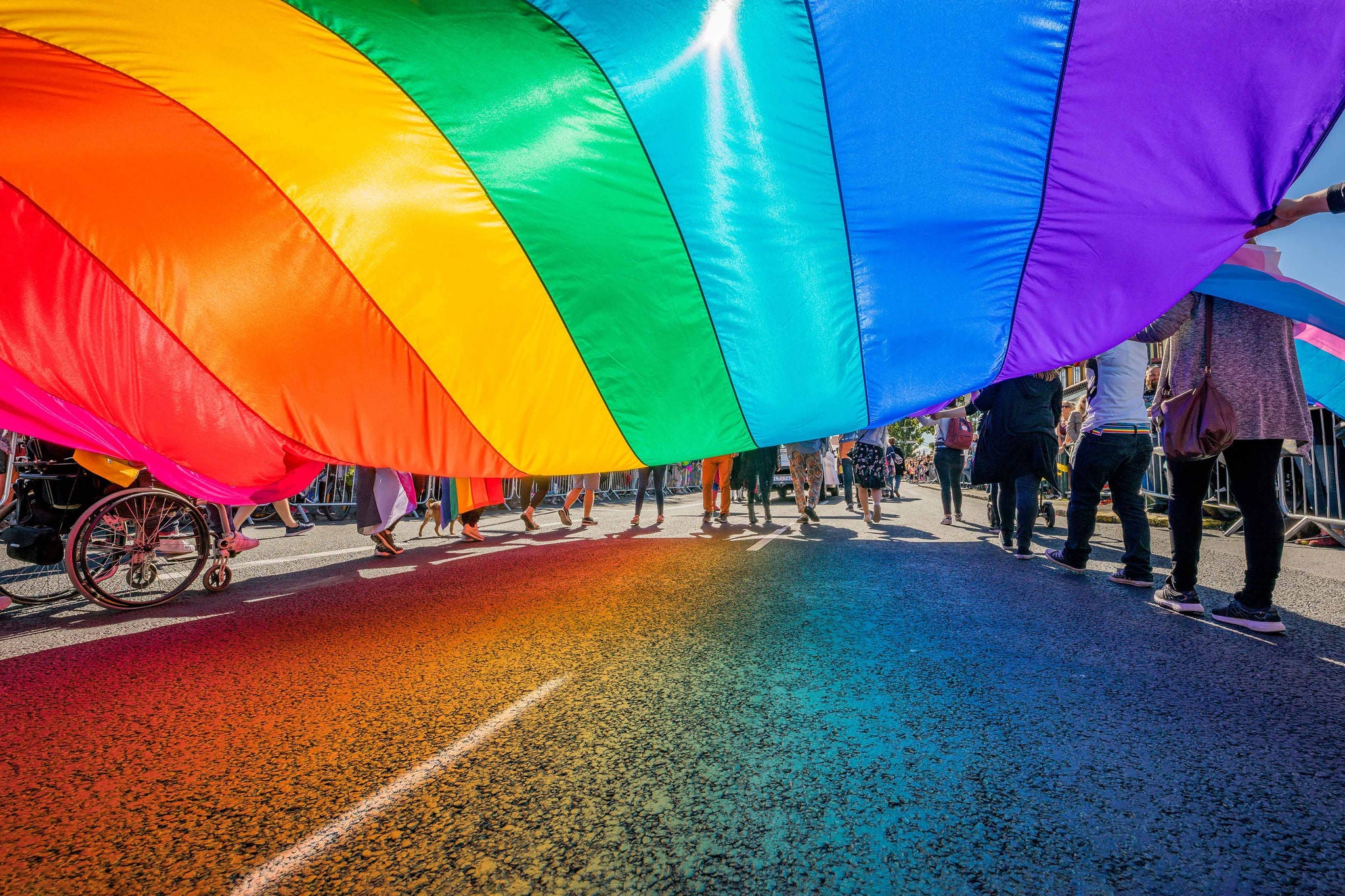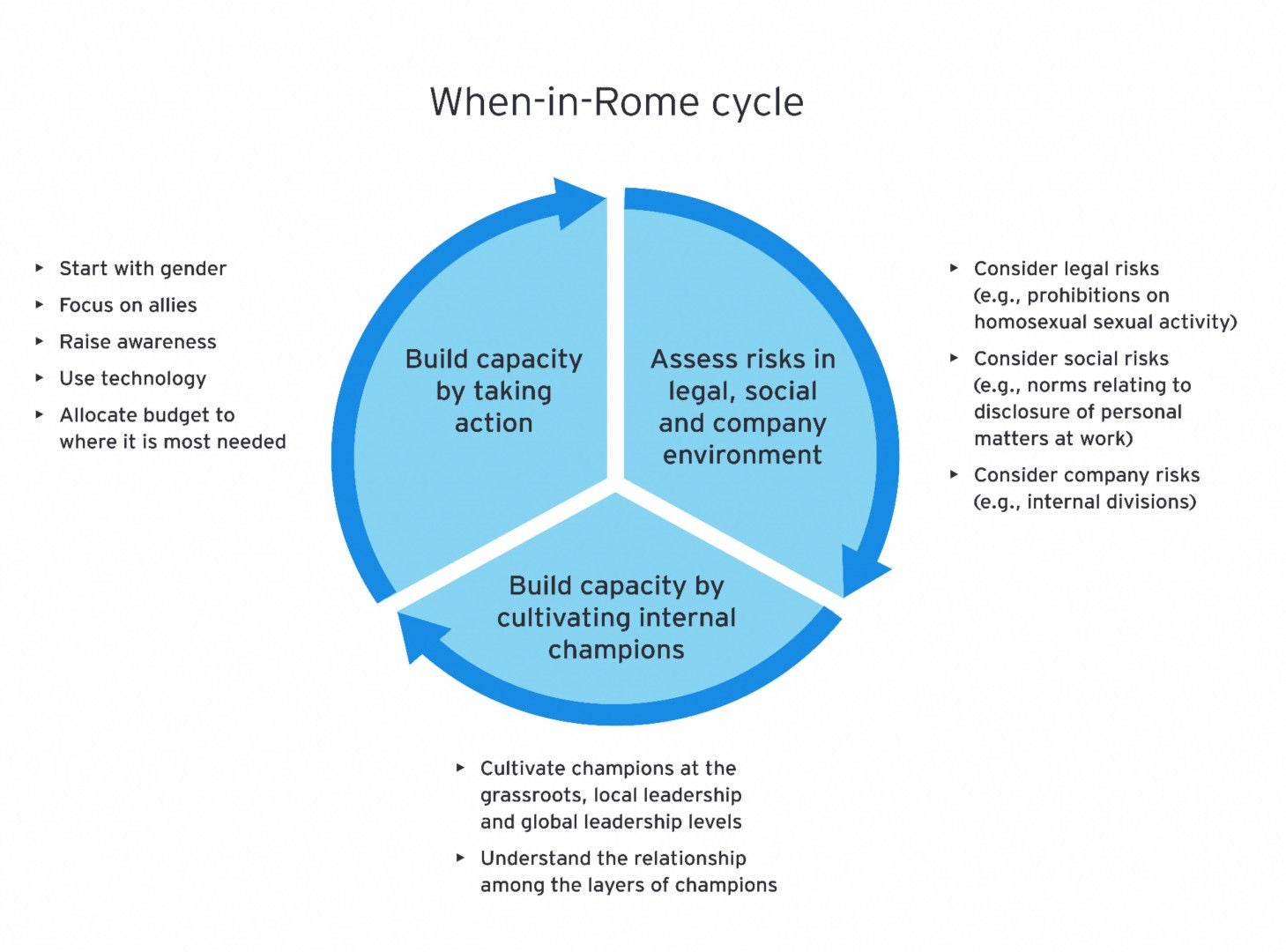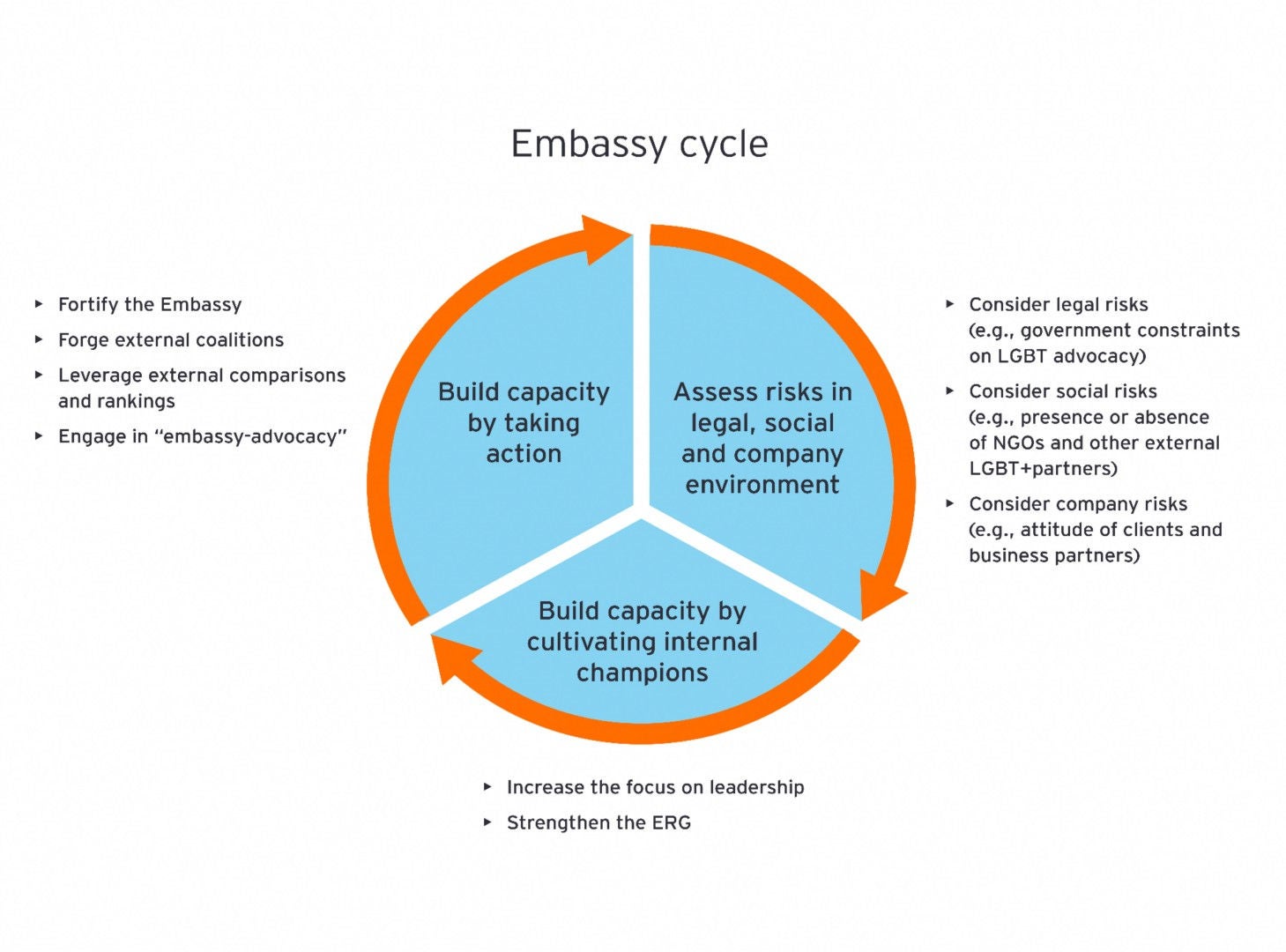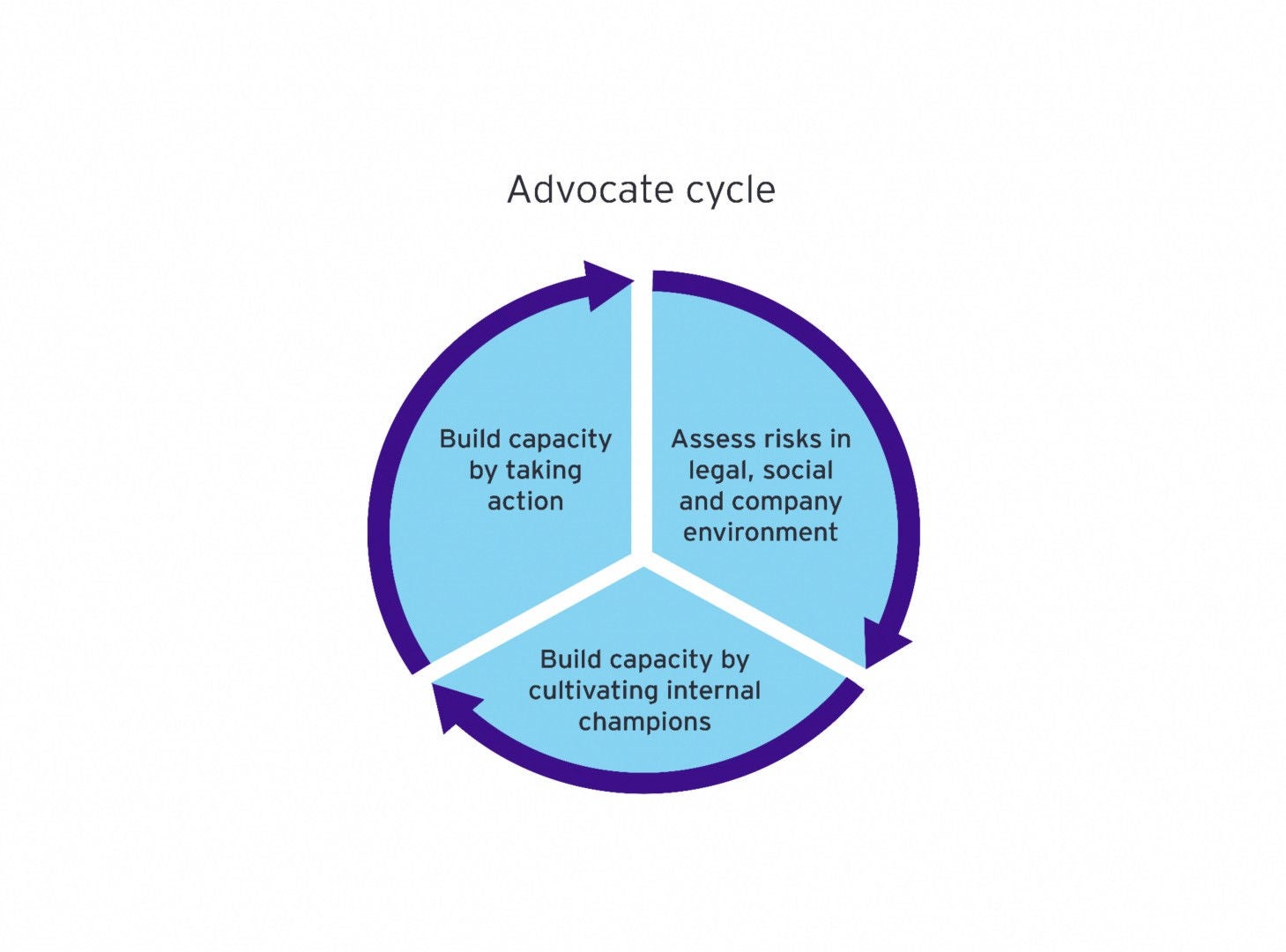EY refers to the global organization, and may refer to one or more, of the member firms of Ernst & Young Global Limited, each of which is a separate legal entity. Ernst & Young Global Limited, a UK company limited by guarantee, does not provide services to clients.
Related article
Nine ways to advance LGBT+ policy throughout global organizations
As firms expand rapidly in frontier markets, where LGBT+ inclusion is often not well-institutionalized, global D&I strategies are crucial.
Driving toward change
During our conversations with clients, we often get asked the important question of how? How do you create and inspire diversity and inclusion? How do you bust through bias? How do you build trust and understanding? The reality is there isn’t one single answer. Our report Making it real – globally: a practical guide for advancing lesbian, gay bisexual and transgender diversity and inclusion across global companies (pdf) provides nine ways to advance LGBT+ policy to practice:
- Conduct an opportunity and risk assessment to identify priorities for action
- Set policy globally, calibrate implementation locally
- Keep making the business case for diversity, promoting 360 education and storytelling
- Engage LGBT+ advocates and allies at all levels of the organization
- Build out strategies supporting successful career growth
- Create opportunities for reverse mentoring and education of management
- Utilize social media and other technology, locally and globally
- Develop LGBT+ networks and unify globally
- Measure, solicit input and celebrate success










